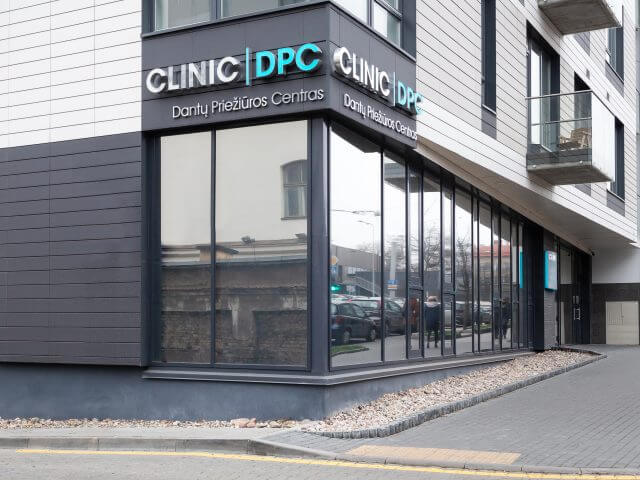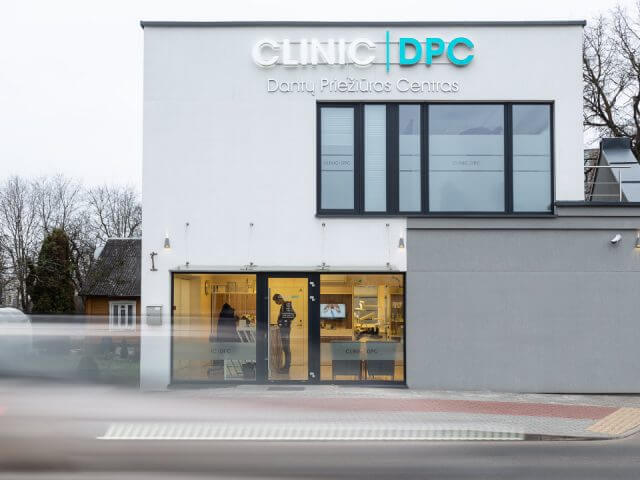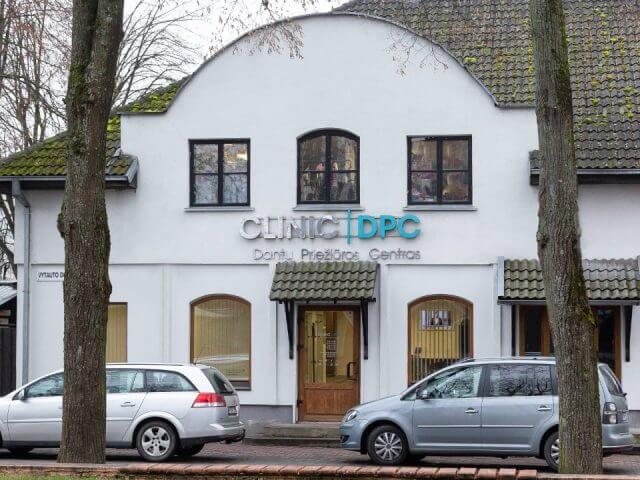What is Prosthetic dentistry?
When a person suffers severe hard tooth tissue loss, has poor teeth aesthetics, tooth wear, dental prostheses (bridges, crowns, veneers, etc.) are used to restore the damaged teeth. In a case of complete tooth loss, the prosthesis is attached to a dental implant. Prosthetic dentistry is crucial for the recovery of functionality and aesthetics of teeth.
When do you need prosthetic dentistry procedures?
Prosthetic dentistry procedures are required when due to damage caused by dental carries, large hermetic seals or tooth wear causes the loss of hard tooth tissues. Prosthetic dentistry is also recommended after endodontic dental treatment – the loss of tooth vitality increases the chance of tooth fractures. In a case of a tooth loss, a complete tooth crown can be restored by attaching the prosthesis to a dental implant.
Types of dental prostheses
Prostheses are divided into removable and fixed dental prosthetic appliances. The latter prostheses are far more superior. Unlike removable prostheses, also known as dentures, fixed prosthetic appliances are often indistinguishable from the natural teeth. The perfect aesthetic look and comfort is something that dentures cannot provide. If possible, we always recommend using fixed prostheses.
Removable prostheses (dentures):
- • Complete dentures
- • Partial dentures
Fixed dental prostheses:
- • Zirconium oxide ceramic crowns
- • Metal ceramic crowns
- • Veneers
- • Dental bridges fixed on adjacent teeth
Fixed implant prostheses:
- • Single crowns
- • Full jaw restoration with fixed prostheses
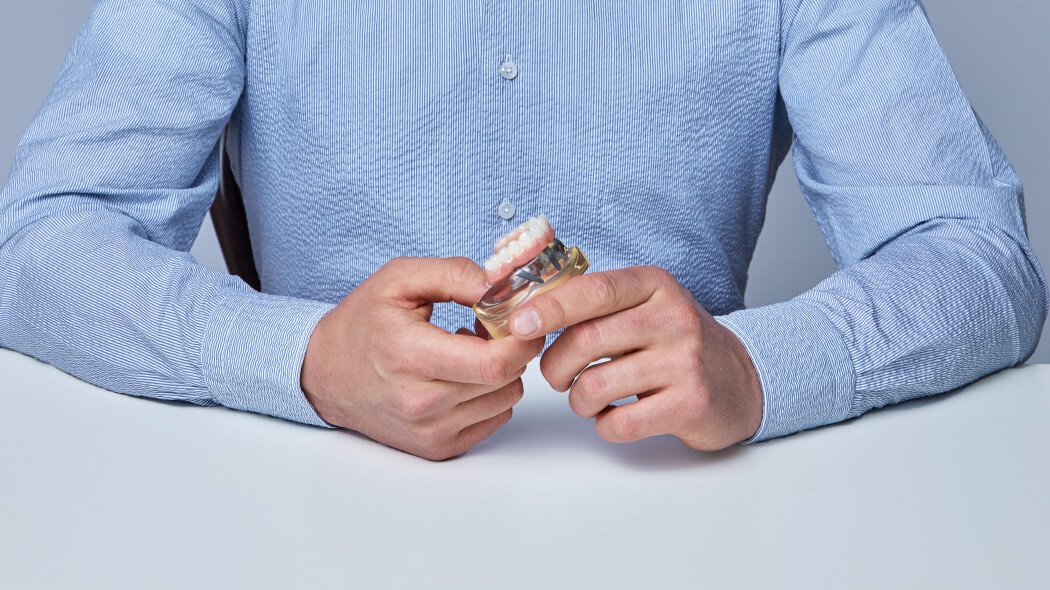
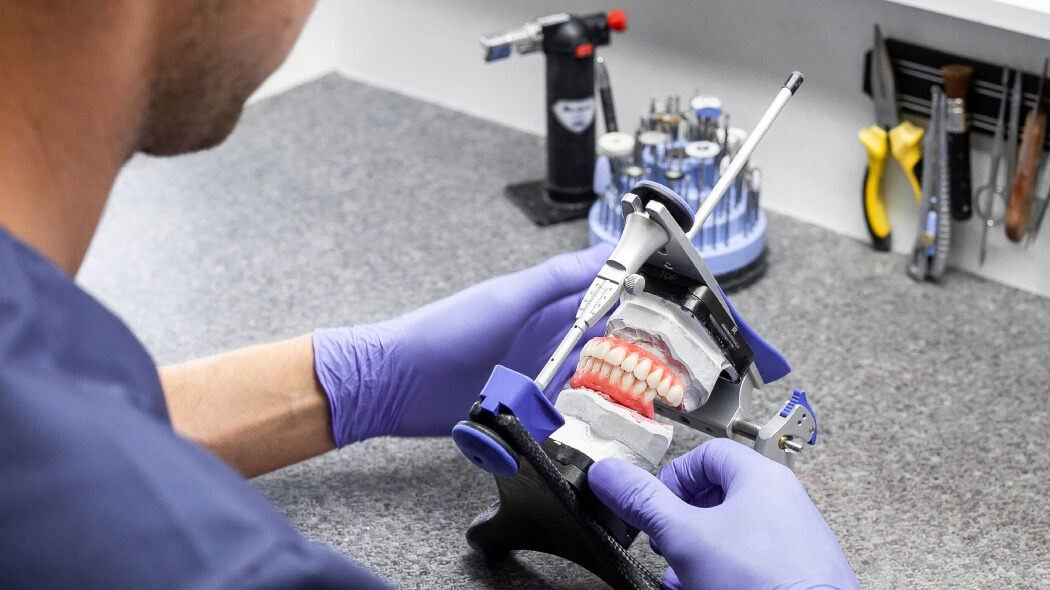
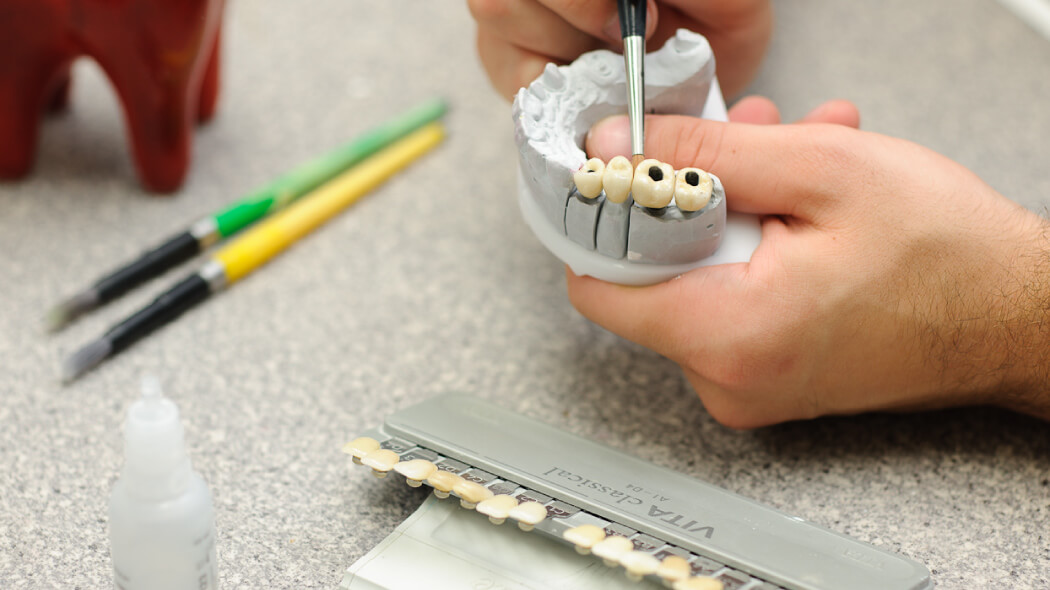
Fixed dental prosthetic appliances
Zirconium oxide ceramic crowns
Zirconium oxide ceramic crowns restore the beautiful aesthetic look that matches the beauty of real teeth. The color of the prosthesis is solid and natural. Zirconium is biologically compatible with the human body, so tooth crowns do not cause allergies or other adverse reactions. Crowns are used when teeth are severely damaged by dental caries, large fillings or other potential factors.
Metal ceramic crowns
Metal ceramic crowns are made by covering a metal frame with a layer of porcelain. If the teeth are severely damaged, dead or have large fillings, it is advisable to use full crowns to ensure sturdiness. Crowns are used when teeth are dead, severely damaged by dental carries or have big fillings.
Veneers
A veneer is a layer of material created by thin ceramic wafers, also known as microprostheses. They are cemented on the surface of the teeth. This procedure is similar to an aesthetic filling, except that the tooth surface is covered with ceramic instead of a filing. Veneers are used to replace old, darkened filings, brown or yellow teeth, ugly shapes, gaps between teeth and create a more aesthetic look. Veneers are strong, remain glossy and do not change color.
Dental bridges
If the patient has more missing teeth, they can be replaced by bridge prostheses. Dental bridges bridge the gap created by one or more missing teeth. The healthy teeth are polished, the prosthesis is fixed on them, and the artificial teeth are placed in the middle. Dental bridges can also be attached to implants.
Removable dental prostheses
Complete dentures
Complete dentures are used when the patient is missing all or a part of their teeth. Dentures are made of a pink plastic base and white teeth. Dentures are attached to remaining teeth with hooks. Elastic, heat injected dentures are more comfortable because they adapt and easily attach to the mouth.
Partial dentures
Partial dentures are utilized when a patient has lost one or a few teeth. It is easier for a patient to get accustomed to partial dentures. These prostheses are held in place by metal clasps. These clip onto the teeth on each side of the gap.





